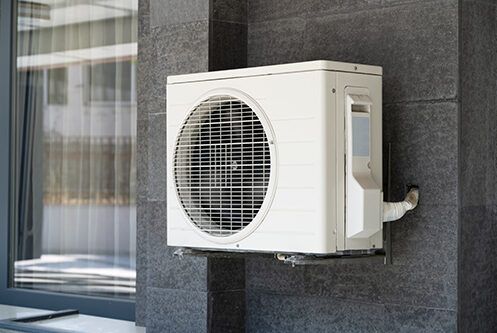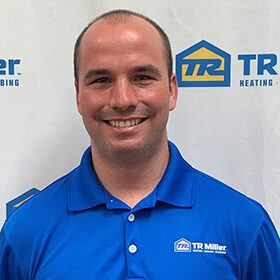Ductless mini-split air conditioners and heat pumps are currently garnering a lot of attention. These systems are efficient, high-performing, and capable of meeting a broad range of climate control needs. If you’re looking to replace the central HVAC system in your Plainfield, IL home, ductless mini-splits are an excellent choice. They’re also perfect for servicing remote areas like garden rooms and garages and for adding fixed heating and cooling solutions to properties that lack HVAC ducting entirely. Read on to discover four impressive benefits that ductless mini-splits can provide.
1. The Ability to Sidestep HVAC Ducting Altogether
If your home was built without HVAC air ducts, putting these features in now could cost quite a bit of money. Worse still, it’s rarely possible to conceal post-construction ductwork entirely. Although there are multiple strategies that HVAC companies can use to make these additions less conspicuous, having them put in will have a definite impact on your indoor aesthetics. Moreover, in some instances, homeowners also wind up losing a significant amount of indoor space.
Ductless mini-splits don’t need this infrastructure to function. When you have a ductless mini-split installed, its condenser/compressor will be placed outside. This primary unit will then be connected to each indoor air handler via refrigerant tubing and wiring. These connections are passed through small, three-inch holes that are cut in the exterior walls of every room or zone that will have ductless service. Compared to retrofitting an older home with ducting, this process is minimally invasive and significantly cheaper. Although ductless mini-splits tend to cost more than other heating and cooling equipment types, the labor for putting these units in usually costs a lot less.
It’s additionally important to note that even when post-construction ductwork can be fully concealed, these projects also require the installation of air vents and grilles. Although these features aren’t highly obtrusive, they can be just as noticeable as the small-sized air handlers that come with many ductless systems.
2. Zoned Heating and Cooling
During the installation of ductless mini-split systems, homes are broken down into separate heating and cooling zones. Each zone gets its own thermostat and air handler, and the temperature in each area can be controlled independently of the others. This allows building residents to customize temperatures in their immediate areas. It also means that you’ll no longer have to spend money on heating and cooling rooms that no one is actively using. When rooms are unoccupied or when residents don’t want heated or cooled air, the respective air handlers can be turned off or they can be set to only regulate humidity.
Zoning with ductless mini-splits also makes these systems perfect for servicing areas that don’t get heated or cooled air from an existing central HVAC system. Ductless ACs and heat pumps are frequently installed in finished basements, attic bedrooms, and garages. If you have livable space in your home that you aren’t using due to an inability to regulate temperatures or humidity, a mini-split will instantly make this area a habitable one. Given their ability to filter indoor air and ventilate closed spaces, ductless mini-splits are popular additions to garages that are used for both parking and personal hobbies.
Zoning with ductless mini-splits is flexible enough to accommodate small and large households and homes with or without existing HVAC. You can have a ductless mini-split installed in a single, remote area of the building, or you can use this system to meet the heating and cooling needs of your entire house. Many homeowners opt to have between just one and four air handlers put in. However, there are also ductless mini-split systems that can support up to eight air handlers at once.
3. Enjoy High Levels of Efficiency Year-Round
When used for cooling, ductless mini-split heat pumps are functionally similar to air conditioners. Rather than producing cooled air, they simply extract heat from buildings and funnel it outside. In winter, this same heat transfer process is used to bring warm outdoor air in. Best of all, many heat pumps can source adequate heat from the outside air when temperatures are as low as 40 degrees Fahrenheit. There are also high-performing ductless heat pumps that can reliably heat homes with this heat transfer method even when outside temperatures fall below freezing.
While high-efficiency furnaces can have annual fuel utilization efficiency (AFUE) ratings of up to 98.5%, some ductless heat pumps produce three times as much heat energy as they consume in electric energy. In the right environments, their efficiency ratings can be as high as 300%.
This is great news if you’re looking for an easy and effective way to lower your carbon footprint. It also means that you can expect to have significantly lower home energy bills throughout the year. It’s additionally important to note that with ductless mini-split heat pumps, absolutely no fuel is being burned. Using heat transfer to heat your home rather than a gas-fired or oil-fired furnace eliminates the risk of carbon monoxide (CO) exposure and poisoning. As states throughout the nation are increasingly introducing legislation to ban or limit the use of gas-fired appliances, putting a ductless mini-split heat pump in will keep you one step ahead of fast-changing efficiency standards. Under the Inflation Reduction Act of 2022, a ductless mini-split heat pump with the right SEER2 rating can also qualify you for several impressive tax incentives.
There’s also the fact that ductless mini-split heat pumps and air conditioners distribute air right where it’s produced. Heated and cooled air doesn’t have to travel through many feet of ducting before it enters the living area. This prevents duct-related heat loss which can account for as much as 50% of overall energy waste in homes that have central, ducted heating and cooling.
4. Instantly Boost Your Home’s IAQ
Eliminating ductwork from your heating and cooling plan can also have a remarkable impact on your indoor air quality. HVAC ductwork can harbor dirt, dust, mold, bacteria, and many other allergens, contaminants, and pathogens. If you have someone in your household who struggles with allergies or asthma, making the switch to a ductless mini-split could help minimize their symptoms.
Like central HVAC, ductless mini-split systems come with standard air filters. Although these filters only need to be replaced annually, they should be taken out and cleaned every three to four weeks. With the option to wash your mini-split’s air filters as needed, you can keep these components absolutely pristine without spending a lot of money.
Together, the efficiency and indoor air quality benefits of ductless ACs and heat pumps also make them a top choice for modernizing properties. If you have outdated baseboard or wall heaters or an inefficient window air conditioner, this is an upgrade that’s virtually guaranteed to add both marketability and value to your house.
As a third-generation, family-owned company, we’ve been proudly serving Plainfield, IL and the surrounding communities for quite some time. We offer plumbing, heating, and cooling services. We also provide an impressive range of indoor air quality products and preventative maintenance agreements. To find out more about ductless mini-split systems or to schedule service, contact TR Miller Heating, Cooling & Plumbing today!


